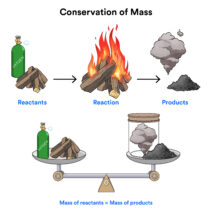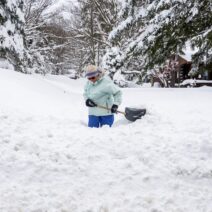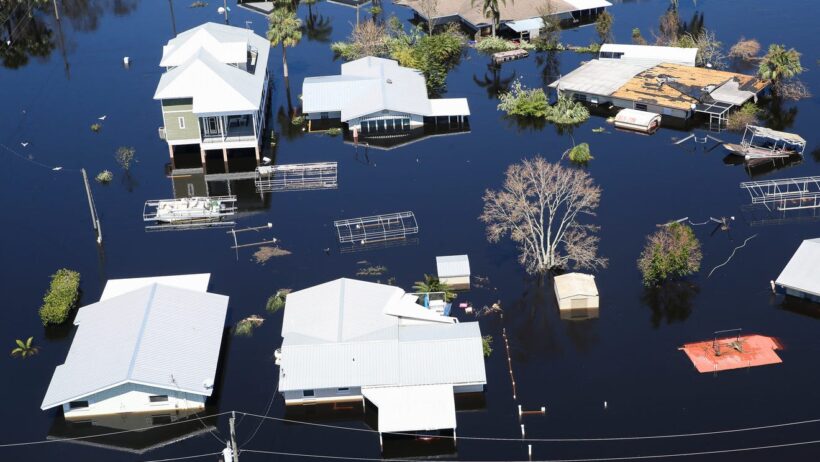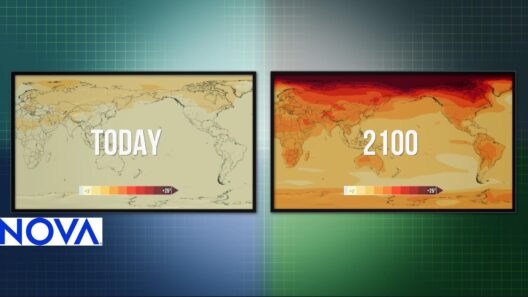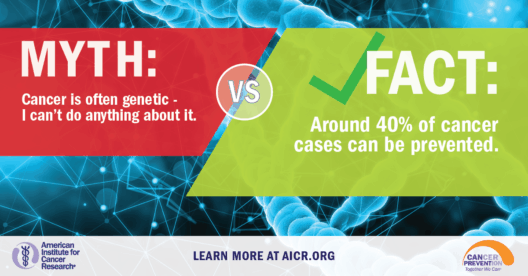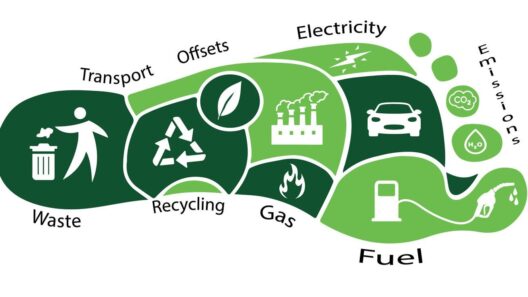Climate change has become an indomitable fixture in contemporary discourse, influencing myriad aspects of our environment. One prominent concern frequently discussed within this debate is the relationship between climate change and the escalation of severe weather phenomena, particularly hurricanes. Hurricanes have long been a subject of fascination and fear due to their devastating potential. This analysis aims to elucidate how climate change may exacerbate these cyclonic storms and what factors contribute to their increasing intensity and frequency.
At the core of the debate lies the fundamental mechanics of hurricanes themselves. A hurricane is a type of tropical cyclone characterized by organized thunderstorms and defined circulation patterns. These storms form over warm ocean waters, typically when surface temperatures exceed 26 degrees Celsius (79 degrees Fahrenheit). The extensive energy provided by these warm waters serves as the catalyst for storm development. In tandem, the atmosphere must feature low vertical wind shear, allowing the system to strengthen as it ascends and evolves.
As the planet warms due to anthropogenic influences—the release of greenhouse gases such as carbon dioxide and methane—the oceans absorb a significant portion of this heat. Consequently, rising sea surface temperatures create an environment more conducive to the formation of hurricanes. Studies indicate that for every degree Celsius rise in temperature, the potential for hurricane intensity increases markedly. Higher temperatures not only bolster the energy available to storms but also facilitate the release of additional moisture, which serves as fuel for cyclone intensification.
One salient feature of hurricanes is their capacity to engender severe rainfall. The warmer atmosphere holds more moisture—approximately 7% more for every degree Celsius of warming. This phenomenon translates to more intense downpours and prolonged rain events associated with hurricanes. Consequently, areas previously unaccustomed to flooding are now increasingly vulnerable, reinforcing the notion that climate change is fundamentally altering historical weather patterns.
However, it is crucial to delineate that while climate change contributes to the worsening of hurricanes, it does not solely govern their formation. Natural variability plays a significant role in influencing weather patterns, including tropical cyclone development. Factors such as atmospheric patterns like El Niño or La Niña can alter sea temperatures and wind patterns, thereby impacting hurricane behavior. Nonetheless, the overarching trend suggests a correlation between climate change and intensified storms.
Moreover, the geographical dynamics of hurricane paths are also shifting due to climate change. Warming oceans may lead to altered wind patterns, nudging storm tracks and changing the regions susceptible to hurricane impacts. Areas previously considered safe may now face an elevated risk of direct hits, posing a challenge for local governments and infrastructural planning. Socio-economic implications abound, as communities face the dual threat of environmental unpredictability and the costs associated with recovery and adaptation.
Expert meteorologists and climate scientists endeavor to understand these complex systems better, employing advanced modeling techniques to predict future scenarios. Their research endeavors aim to quantify the extent to which climate change amplifies hurricane threats. Some studies postulate that, by the end of the 21st century, the frequency of major hurricanes (Category 3 and above) could increase by as much as 20-30%. Such predictions underscore the urgency of addressing climate change on a global scale.
As the discourse evolves, the distinction between adaptation and mitigation becomes increasingly critical. Mitigation efforts focus on reducing greenhouse gas emissions through renewable energy innovations, sustainable practices, and legislative policies aimed at curtailing fossil fuel consumption. Conversely, adaptation endeavors seek to enhance resilience against storms that are already an unfortunate reality. Investing in infrastructure that can withstand severe weather, implementing disaster preparedness programs, and planning urban development with an awareness of potential flooding scenarios are all crucial strategies necessary for societies to navigate the evolving landscape of climate-induced hurricanes.
Public sentiment surrounding the issue of climate change and hurricanes has also shifted. Awareness campaigns and educational initiatives are pivotal in mobilizing community action and fostering a sense of shared responsibility. Individuals can contribute through conscientious choices, such as minimizing carbon footprints, supporting climate-friendly legislation, and participating in local conservation efforts. Collective action can curtail the escalation of climate impacts, including the threat posed by hurricanes.
In summary, the interplay between climate change and hurricane dynamics is a complex and multifaceted issue. The evidence suggests that rising global temperatures, primarily attributed to anthropogenic factors, are instrumental in enhancing the intensity and frequency of these powerful storms. As communities face an increasingly precarious future characterized by climate variability, proactive strategies must be employed to adapt to this new normal while striving to mitigate the root causes of climate change. The consequences of inaction could yield catastrophic results, not only for vulnerable ecosystems but also for human life and socio-economic stability.
In confronting the realities of a warming planet, it is incumbent upon us as a society to acknowledge our role in this challenge, embracing both immediate and long-term solutions. The call to action is clear: we must rise collectively to safeguard our environment and, ultimately, our futures from the lurking menace of climate-fueled hurricanes.
